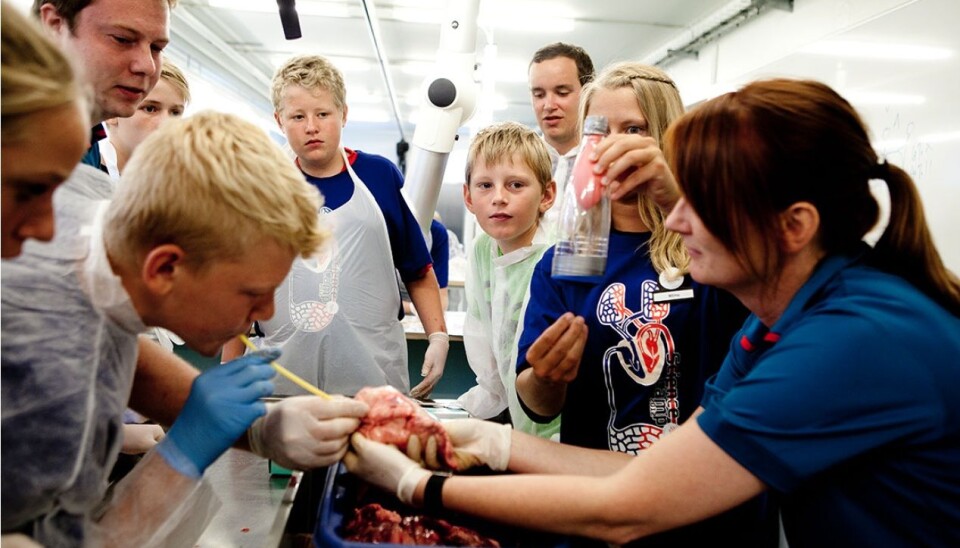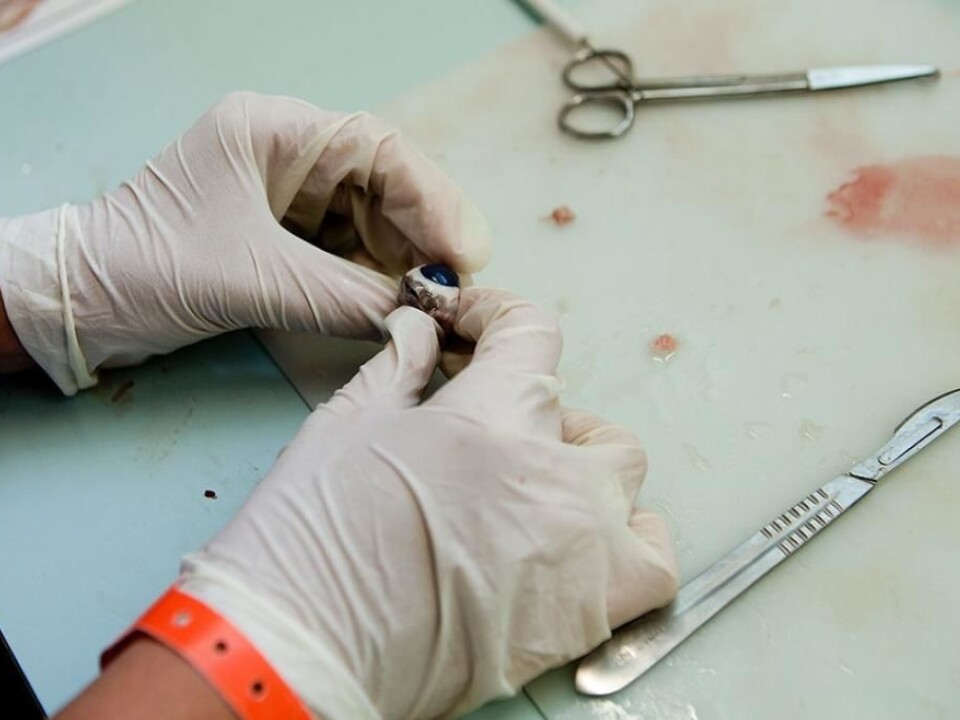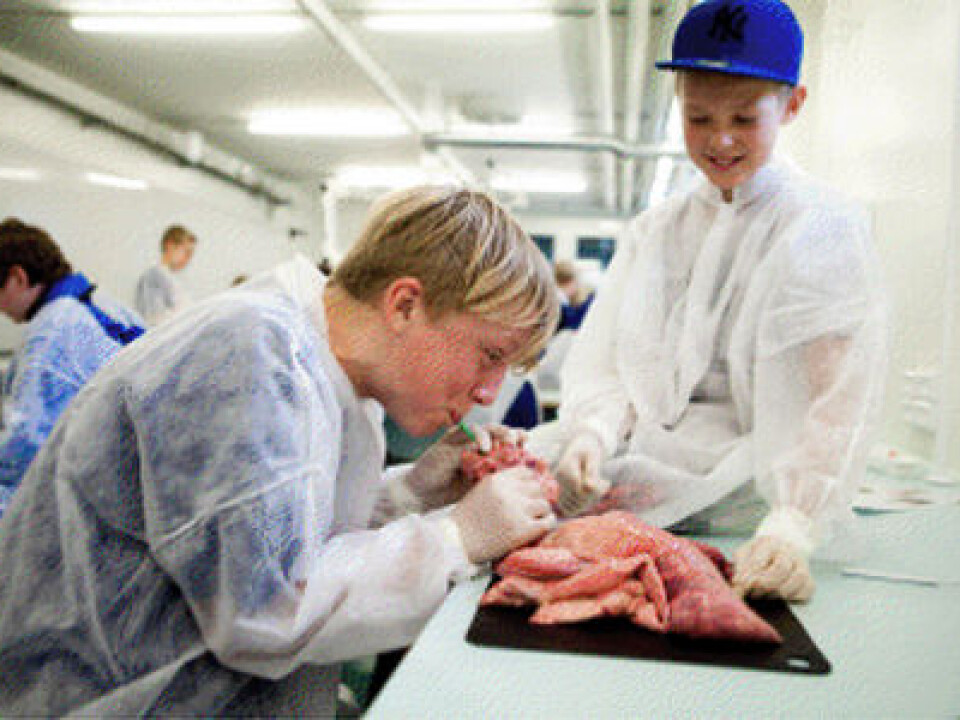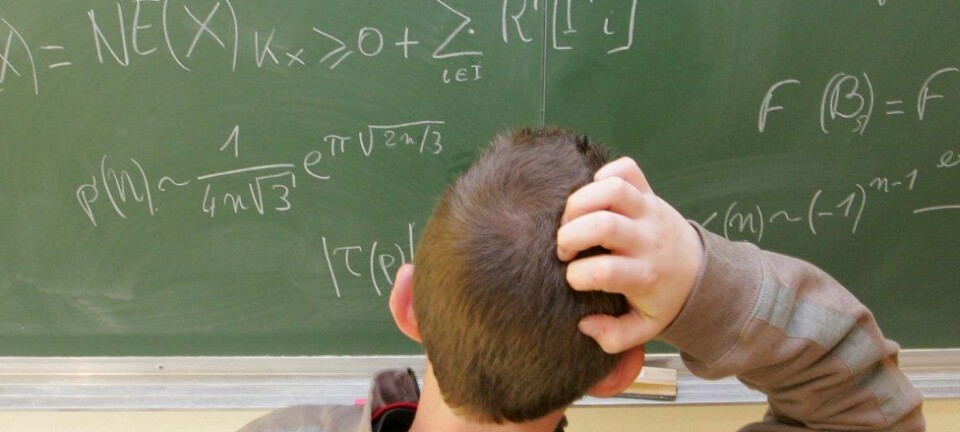
Here’s tomorrow’s science classroom
Scientists are testing a new teaching concept to rekindle shoolchildren’s interest in science.
Retaining schoolchildren’s attention during a science class can be a challenge, even for the very best teachers.
Perhaps this is because there’s too much theory and too little hands-on fun for the kids to engage in.
Danish scientists are now testing the possibilities of taking hands-on science straight into primary and lower-secondary school classrooms to help solve this challenge. They argue that far more experiments and group work should be included in classroom science teaching in the future.
To that end, they have fitted up what they believe is the ideal science classroom in a huge barn by the science experience park, Danfoss Universe.
A guideline for future science education

Earlier this year, the new facilities, consisting of several rooms in the barn, were tested by around 300 pupils aged between 12 and 15 as an initial phase of a research project on the future of science education.
“We have great ambitions to develop a concept that can serve as a guideline for future science education,” says Frans Ørsted Andersen, a senior lecturer at Aarhus University’s Department of Education. He’s one of the scientists hired by Danish funding agency the Universe Foundation to construct the new ‘exploratorium’.
“We’re trying to figure out how we can engage and motivate the children by presenting them with the right materials and the ideal design.”
Danish pupils find science boring
The project has been funded in the hope that it can re-ignite Danish schoolchildren’s interest in the natural sciences.

”Many see it as problematic that far too many children, youths and adults aren’t interested in the natural sciences. The schools lack teachers with science subjects such as physics and chemistry as their main subject,” says Andersen.
“The consequence is that the kids end up being taught science by people who aren’t really passionate about the subject. This could turn the children off science for the rest of their lives. Ultimately, this is really bad news for companies that need employees with a genuine interest in science.”
Throwing paint bombs in class
Although the new science barn has been established with very serious intentions, the pupils saw none of that when it officially opened to school groups from across the country on Monday.
The science classrooms are packed with a wide variety of science instruments that enable the children to experiment to their heart’s content. They can, for example, learn about gravity by experimenting with paint bombs that are caught on high-speed cameras.
We have great ambitions to develop a concept that can serve as a guideline for future science education.
Frans Ørsted Andersen
“We have fitted up the rooms with a focus on what we know can benefit motivation and engagement in science education,” says Andersen.
He believes that children can be turned on to science if and when the teaching follows principles such as:
- Hands on research: In natural sciences it’s important to sense what you’re working with. If you can’t see that chemicals light up when you mix them together, much of the magic of science disappears. And if you can’t cut up a dead rat, it’s hard to learn how it really looks inside.
- Open experiments: Experiments are always good. But if the children only follow a study guide when doing the experiments, not much is gained. It’s boring for the children to simply follow a recipe where the teacher tells them what the outcome will be. Instead, the children should have access to a wide variety of scientific equipment that enables them to solve an open assignment. An example would be: can you think of a new way of lighting up a room? Here, the teacher doesn’t know the answer in advance and the pupils are free to come up with an answer based on the information they have been given. They could for instance generate light by sending gas through a tube so that it lights up.
- Openness to communication and debate: Today’s children are used to discussing, and this was taken into account in the layout as there are good opportunities for group work. The children are encouraged to communicate and co-operate to solve problems via the internet and social media. In this way, the pupils are engaging in an innovative working method, which gives them a sense of ownership over the projects.
A service to schools
We’re already seeing that it works. The youngsters have been very focused and committed – and they’ve enjoyed themselves. Their teachers are also happy with it, saying that it opens up a lot of opportunities.
Frans Ørsted Andersen
The new science barn is intended to serve as a form of school service, similar to what some museums offer.
By having school classes use the facilities as part of their education, the pupils can see for themselves that natural science can be both fun and engaging.
“We’re already seeing that it works,” says Andersen. “The youngsters have been very focused and committed – and they’ve enjoyed themselves. Their teachers are also happy with it, saying that it opens up a lot of opportunities.”
Ideas from the barn will spread to schools
The new teaching concept seems to be such a success that several of the ideas are likely to spread out to schools across the country.
“It’s probably not realistic to build barns like this next to schools across the country, but some of the principles can probably be transferred to schools,” he says.
“This is one of the things we researchers want to investigate further. We have so far only managed to interview and follow 300-400 pupils. So even though it’s clear that they’re committed, it’s too early to say with any certainty that they learn more than they would with traditional teaching methods.”
For this reason, the researchers have applied for funding to investigate further into the possibilities of this project.
----------------------------------------
Read the Danish version of this article at videnskab.dk
Translated by: Dann Vinther









